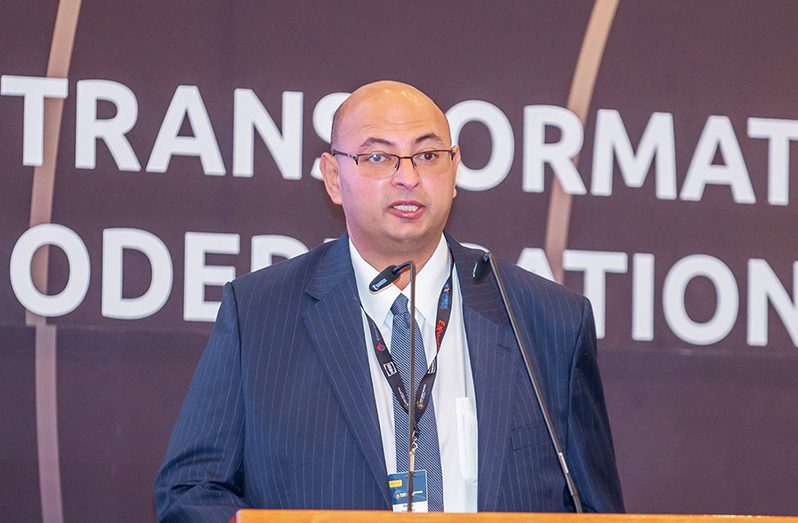–as Gas-to-Energy Project promises 50 per cent cut in electricity rates by mid-2025
GUYANESE consumers could expect a 50 per cent reduction in electricity rates by mid-2025, in keeping with the People’s Progressive Party/Civic (PPP/C) government’s commitment to energy sustainability and reduced costs.
The ambitious project aims to harness natural gas from the Liza Phase One and Two Floating, Production, Storage, and Offloading (FPSO) vessels, channeling it through a 200km, 12-inch diameter pipeline to a new power plant and Natural Gas Liquids (NGL) facility at Wales.
Consultant for the Ministry of Natural Resources, Winston Brassington has said that this initiative is poised to transform the energy landscape in Guyana, offering a sustainable and cost-effective alternative to the current energy mix.
Brassington, speaking on the second day of the Guyana Energy Conference and Supply Chain Expo, outlined the project’s timeline and components.
“The pipeline and transmission work will be completed this year. The power plant and the NGL plant, using single cycle, will be online by the first half of next year. We’re projecting by April,” he said.
The project, with a price tag of just under US$2 billion, aims to complete the necessary transmission lines and substations by the end of the year, ensuring a seamless distribution network along the Demerara Berbice Interconnected System (DBIS).
By providing a more reliable and cost-effective energy source, the initiative could drastically reduce the frequency and duration of power outages while also cutting the cost of electricity from the current US$0.25/0.36 per kWh to an affordable US$0.06/0.07 per kWh.
Such improvements would not only enhance the quality of life for Guyanese but also foster a more conducive environment for business and industry growth.
“The pipeline and the transmission work will be completed this year… resulting in the 50 per cent reduction in GPL rates which we project to happen by mid next year,” Brassington said, highlighting the project’s potential to alleviate one of the region’s highest energy costs.
Additionally, Minister within the Ministry of Public Works, Deodat Indar, highlighted the broader economic impact of the initiative.
“Energy costs represent a significant operating cost, a significant cost of goods manufactured; your cost is around 30 per cent and upwards in Guyana,” Indar said.
He highlighted the cascading effects of the project on various industries, noting: “When that comes on board, then your electricity costs or power costs are going to be cut by half.”
The GTE project not only promises to significantly reduce energy costs but also to meet the growing demand for electricity in Guyana, which is projected to reach almost 1,000 megawatts by 2030.
With approximately 40 per cent of the onshore pipeline and 55 per cent of the offshore portion completed, the nation is on the brink of a major energy transformation that could set a precedent for sustainable development in the region.
ExxonMobil’s local affiliate, Esso Exploration and Production Guyana Limited (EEPGL), the operator in the Stabroek Block, and its co-venturers are constructing the pipeline.
That pipeline will be landing on the West Coast Demerara shore, and will continue approximately 25 kilometres to the NGL and power-plant facilities. It has an estimated cost of US$1 billion and is cost-recoverable.
The Government of Guyana has earmarked $80 billion in the 2024 budget for the project, highlighting its significance to national development.
Moreover, in December 2022, the government and US-based LINDSAYCA, in collaboration with the local CH4 Group, signed a US$759 million contract for constructing the power plant and NGL facilities, reinforcing the project’s momentum.



.jpg)








